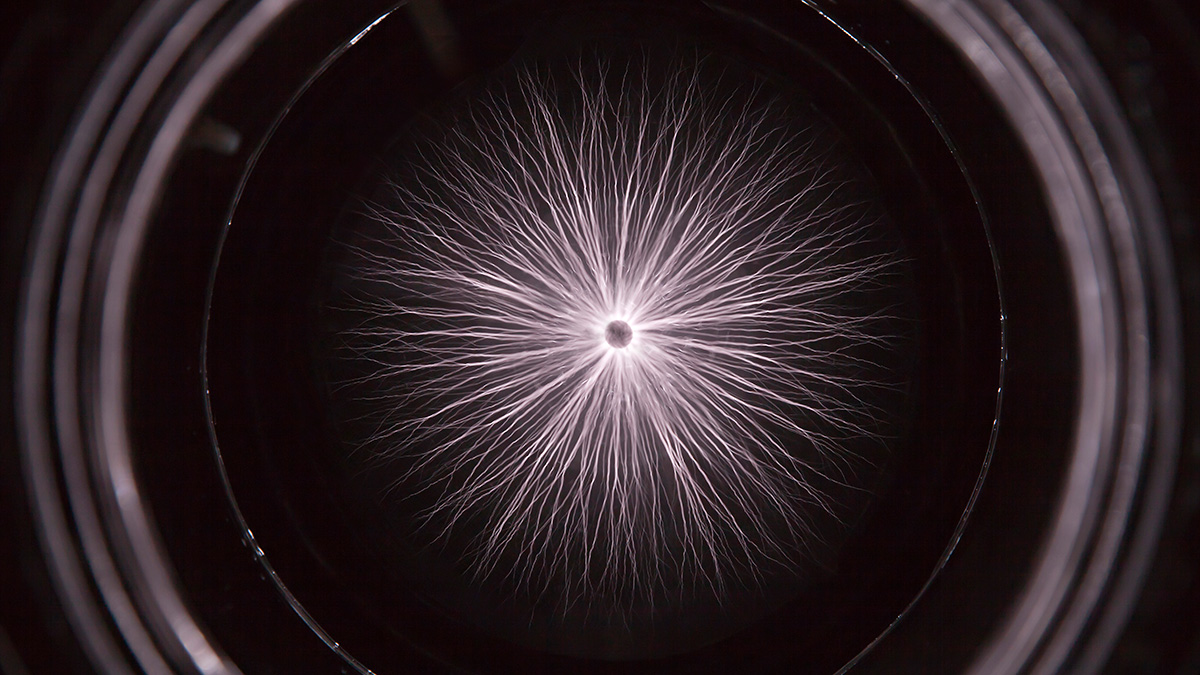In recent years, scientists have found PFAS (per- and polyfluoroalkyl substances) in just about every water source they’ve analyzed, from Arctic ice samples to tap water across the United States. These human-made chemicals—which are linked to immune system disturbances, some types of cancer, and reproductive issues such as high blood pressure in pregnant persons—are used in a wide variety of consumer products, including fast food containers, nonstick cookware, water-resistant clothing, and cosmetics. “They are used in almost every aspect of our daily lives,” said Bo Guo, an assistant professor in the Department of Hydrology and Atmospheric Sciences at the University of Arizona.
As the nickname “forever chemicals” indicates, PFAS aren’t going to degrade in the environment without outside intervention.
But even if people somehow managed to avoid PFAS-containing products, they could still be exposed, as PFAS leach into soil and groundwater from manufacturing facilities, landfills, and military sites. They “are super persistent under natural conditions,” Guo added.
As the nickname “forever chemicals” indicates, PFAS aren’t going to degrade in the environment without outside intervention. But clever chemists and innovative entrepreneurs are finding new ways to approach the pollution problem posed by PFAS.
First Step: PFAS Removal
Although strategies exist for filtering PFAS out of drinking water, they are far from perfect. One of the best-studied methods is activated carbon filtration, but these filters decline in effectiveness over time and create large volumes of PFAS-contaminated carbon sludge that’s difficult to safely dispose of.
Scientists like William Dichtel, a chemistry professor at Northwestern University in Evanston, Ill., are working on solutions for this difficult problem. In 2016, scientists in Dichtel’s lab created a polymer they have since named DEXSORB that’s derived from corn and can bind to different trace organic pollutants. Since then, they’ve been tweaking this material to better bind to PFAS to remove them more easily from the environment.
“One of the building blocks of the polymer is a molecule that’s shaped like a cup,” Dichtel explained. “There are trillions and trillions of these even in small samples of this polymer, and that cup is like a little docking site for many of these PFAS.” In water, PFAS will stick to the material and can be removed down to very low concentrations, he said. This polymer, and variations of it, are being developed for at-home filtration as well as municipal drinking water filtration, and Dichtel has cofounded a company called Cyclopure aimed at commercializing the products.
Dichtel said that future work in his lab will focus on making the polymer production process more cost-effective and on developing materials that target different types of PFAS. For example, DEXSORB+ (a positively charged version of the polymer) is good at removing many types of negatively charged PFAS but has lower removal efficiency for some types of noncharged PFAS.
Second Step: PFAS Destruction
After PFAS chemicals have been removed from contaminated water sources, what do we do with them? That’s a billion-dollar question that scientists, including Selma Mededovic Thagard, a professor of chemical and biomolecular engineering at Clarkson University in Potsdam, N.Y., are trying to answer.
Thagard designs plasma reactors for treating different types of contaminated water. Originally, she said, these reactors weren’t designed for PFAS at all—the discovery that they were effective at treating PFAS was made almost by accident when a colleague suggested she put some PFAS-contaminated water in the reactor to see what would happen. “When the results came in, we saw that PFAS were removed faster than anything else,” said Thagard.
Thagard’s reactors use electricity to generate argon plasma on the surface of PFAS-contaminated water while gas bubbles through the water to help bring the PFAS to the surface. “Argon, we think, produces some species that are unique to plasma that actually degrade these [PFAS] compounds,” she said. Thagard and Thomas Holsen, another Clarkson University professor, founded the company DMax Plasma to develop the plasma reactor for commercial use. Thagard said these reactors could be used to treat PFAS-contaminated water that is produced at military bases and industrial or manufacturing sites before it seeps into to the water table.
Some challenges remain. For example, although the reactors can degrade some types of PFAS molecules very quickly, shorter-chain PFAS molecules are degraded more slowly. Thagard is working to address this, as well as to scale up the systems to increase treatment capacity.
“The general consensus is that there’s not a one-size-fits-all solution [to destroying PFAS chemicals].”
Other strategies are also being developed to destroy PFAS, including ultrasonic waves, specialized microbes, and hydrothermal alkaline treatments. Importantly, these strategies are not mutually exclusive, meaning multiple approaches could be applied to clean polluted waters. There are thousands of types of PFAS, which can occur in varying concentrations in different environmental contexts, and different treatments may work best in different situations.
Technologies to remove and destroy PFAS are a crucial part of confronting contamination, but so too are improved regulations. The EPA outlined some suggested actions in its PFAS Strategic Roadmap published last year: coordinating monitoring through federal offices for water, land and management, air and radiation, and research and development; using legal and financial enforcement tools to better identify and address PFAS releases at facilities; and developing and validating more effective tools for monitoring PFAS in both the environment and the human body.
“I think the general consensus is that there’s not a one-size-fits-all solution,” said Thagard.
—Hannah Thomasy (@HannahThomasy), Science Writer

